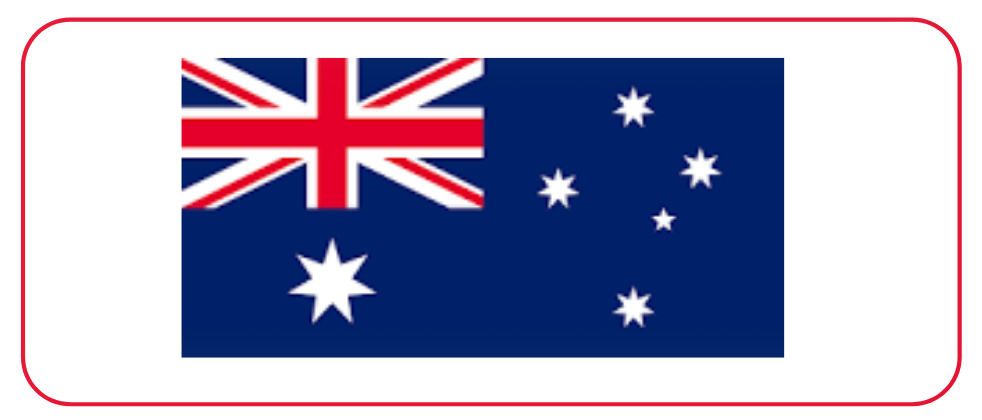PROTECTIVE AND THERAPEUTIC EFFECTS OF PROPOLIS AGAINST MONOSODIUM GLUTAMATE (MSG) TOXICITY IN RAT BRAIN: HISTOPATHOLOGICAL STUDY
DOI:
https://doi.org/10.53555/eijas.v1i2.7Keywords:
Brain, Rats, Monosodium Glutamate, Propolis, HistopathologyAbstract
Monosodium glutamate (MSG) is the salt of nonessential glutamic acid. It has a property to enhance the perception that flavors are well blended and full-bodied. Propolis is a resinous substance collected by honeybees from the bud and bark of certain trees and plants. It has been used in folk medicine from ancient times in many countries. The present study aimed to investigate the protective and curative effect of propolis against MSG on the rat brain. Accordingly, fifty male albino rats were divided into five groups. The first group served as control, whereas the second group was administered propolis at an oral daily dose of 200 mg/kg b. w. for eight weeks. The third group received MSG 1 g/kg b. w. for eight weeks. The fourth group (protective group) was initialy administered with propolis alone for 4 weeks, and followed by MSG in association with propolis for 4 weeks. The fifth group (therapeutic group) was first given MSG alone for 4 weeks and secondly administered propolis in association with MSG for 4 weeks. At the end of four and eight weeks, brain tissues were collected for histopathological study purposes. Histopathological studies of MSG-treated rats displayed deleterious alterations in brain tissues as indicated by perivascular oedema and cuffing. Some blood vessels were congested and there was vacuolation of some neurons. The protective group showed gliosis in the cerebrum. There were still some odematous changes and perivascular cuffing which were still persistent. Propolis extract in the curative group caused active hyperaemia of the brain, blood vessels were congested and showed perivascular oedema and some neurons exhibited a marked vacuolation. It may be concluded that the results confirm the toxic effect of MSG on the brain and the protective effect of propolis, especially when administrated as a propolis alone.
References
. Kondoh, T. and K. Torii, K. (2008). MSG intake suppresses weight gain, fat deposition and plasma leptin levels in male sprague-dawley rats. Physiol. Behav.; 95: 135-144.
. Pavlovic, V.; Cekic, S.; Sokolovic, D. and Djh$ic, B. (2006). Modulatory effect of monosodium glutamate on rat thymocyte proliferationand apoptosis. Bratisl. Lek. Listy. 107: 185-191.
. Ohguro, H.; Katsushima, H.; Maruyama, I.; Maed, T.; Yanagihashi, S.; Metoki, T. and Nakazawa, M. (2002). A high dietary intake of sodium glutamate as a flavoring (a jinomoto) causes gross changes in retinal morphology and function. Exp. Eye Res., 75 (3): 307-15.
. Egbuonu, A. C. C.; Obidoa, O.; Ezeokonkwo, C. A.; Ejikeme, P. M. and Ezeanyika, L. U. S. (2010). Some biochemical effects of sub-acute oral administration of L-arginine on monosodium glutamate-fed Wistar albino rats 1: Body weight changes, serum cholesterol, creatinine, and sodium ion concentrations. Toxicol. Environ. Chem., 92 (7): 1331-1337.
. Adrienne, S. (1999). The Toxicity/Safety of MSG; A study in suppression of information. Acct. Res.; 6 (4): 259-310.
. Eweka, A. O. and Adjene, J. O. (2007). Histological studies of the effects of monosodium glutamate on the medial geniculate body of adult Wister rat. Electron J. Biomed. May 22.
. El-Nahrawy, W. A. M.; Wahba, S. M. R. and Eldurssi, I. S. (2012). The Potential Effects of Propolis against Monosodium Glutamate (MSG) Toxic Effects on Some Biochemical Aspects of Kidney. Life Sci. J., 9 (4): 4044-4054. (ISSN: 1097-8135).
. Moreno, G.; Perello, M.; Gaillardand, R. C. and Spine, E. (2005). Orexin a stimulates hypothalamic-pituitary-adrenal (HPA) axis function, but not food intake in the absence of full hypothalamic NPYergic activity. Endocrine; 26: 99-106.
. Chaparro-Huerta, V.; Rwera-Cemantes, M. C.; Tomes-Mendoza, B. M. and BeasZarate, C. (2002). Neuronal death and tumor necrosis factor-alpha response to glutamate- induced excitotoxicity in the cerebral cortex of neonatal rats. Neurosci. Lett.; 333: 95-98.
. Farmobi, E. and Onyema, O. (2006). Monosodium glutamate-induced oxidative damage and genotoxicity in the rat: modulatory role of vitamin C, vitamin E and quercetin. Hum. Exp. Toxicol.; 25: 251-259.
. Pavlovic, V.; Pavlovic, D.; Kocic, G.; Sokolovic, D.; Jevtovic-Stoimenov, T.; Cekic, S. and Velickovic, D. (2007). Effect of monosodium glutamate on oxidative stress and apoptosis in rat thymus. J. Mol. Cell Biochem. 303: 161-166.
. Sinor, J. D.; Shen, D.; Venneti, S.; Blitzblau, R. C.; Leszkiewicz, D. N. and Rosenberg, P. A. (2000). NMDA and glutamate evoke excitotoxicity at distinct cellular locations in cortical rat neurons in vitro. J. Neurosci., 20 (23): 8831-8837.
. Hinoi, E.; Takeda, T.; Ueshima, T.; Tsuchihashi, Y. and Yoneda, Y. (2004). Glutamate signaling in peripheral tissues. Eur. J. Biochem., 271: 1-13.
. Mani, F.; Damasceno, H. C.; Novelli, E. L.; Martins, E. A. and Sforcin, J. M. (2006). Propolis: effect of different concentrations, extracts and intake period on seric biochemical variables. J. Ethnopharmacol., 105: 95-98.
. Inokuchi, Y.; Shimazawa, M.; Nakajima, Y.; Suemori, S.; Mishima, S. and Hara, H. (2006). Brazilian green propolis protects against retinal damage in vitro and in vivo. Evid. Based Complement. Alternat. Med., 3 (1): 71-77.
. Raso, G.; Meli, R.; Di Carlo, G.; Pacilio, M. and Di Carlo, R. (2001). Inhibition of inducile nitric oxide synthase and cyclooxygenase-2 expression by flavonoids in macrophage J774A.1. Life Sci., 68: 921-931.
. Breger, J.; Fuchs, B. B.; Aperis, G.; Moy, T. I.; Ausubel, F. M. and Mylonakis, E. (2007). Antifungal chemical compounds identified using a C. elegans pathogenicity assay. PLoS Pathogens, 3: 168-177.
. De Campos, R. O.; Paulino, N.; Da Silva, C. H.; Scremin, A. and Calixto, J. B. (1998). Anti-hyperalgesic effect of an ethanolic extract of propolis in mice and rats. J. Pharm. Pharmacol., 50: 1187-1193.
. Dantas, A. P.; Salomao, K.; Barbosa, H. S. and De Castro, S. L. (2006). The effect of Bulgarian propolis against Trypanosoma cruzi and during its interaction with host cells. Mem Inst Oswaldo Cruz, Rio de Janeiro., 101: 207-211.
. Bratter, C.; Tregel, M.; Liebenthal, C. and Volk, H. D. (1999). Prophylactic effectiveness of propolis for immunostimulation: a clinical pilot study. Forsch. Komplementarmed., 6: 256-260.
. Orsolic, N. and Basic, I. (2003). Immunomodulation by water-soluble derivative of propolis: a factor of antitumor reactivity. J. Ethnopharmacol., 84: 265-273.
. Shimazawa, M.; Chikamatsu, S.; Morimoto, N.; Mishima, S.; Nagai, H. and Hara, H. (2005). Neuroprotection by Brazilian Green Propolis against In vitro and In vivo Ischemic Neuronal Damage. Evid. Compl. Alt. Med., 2: 201-207.
. Bhadauria, M. (2012). Propolis prevents hepatorenal injury induced by chronic exposure to carbon tetrachloride. Evid. Based Complement. Alternat. Med. ID 235358, 12 pages.
. Lillie, R. D. (1954). Histopathological techniques and practical histochemistry. McGraw-Hill, U. S.
. Harris, H. F. (1900). After Bruce Casselman W. G. (1959): ''Histochemical Technique'' Methuen and Co. Ltd.
. Solon, F. S.; Latham, M. C.; Cuirriec, R.; Florenthino, R.; Williamson, D. F. and Aguilar, G. (1985). Fortification of monosodium glutamate with vitamin A: The Philippine experience. Food Technol., 39: 71-76.
. Chaudari, N. and Roper, S. D. (1998). Molecular and physiological evidence for glutamate (umami) taste transduction via a G-protein-coupled receptor. Annal. New York Acad. Sci., 855: 398-405.
. Bankova, V.; Popova, M.; Bogdanov, S. and Sabatini, A. G. (2002). Chemical composition of European propolis: expected and unexpected results. Z. Naturforsch., 57: 530-533.
. Mohamed, W.; Ismail, T. and Farouk, S. (2016). The ameliorative potential of ethanolic extract of propolis on hematotoxicity and structural neuronal damage in hyperthermia-exposed rats. Iran. J. Basic Med. Sci., 19 (8): 875-882.
. Bhadauria, M.; Nirala, S. K. and Shukla, S. (2008). Multiple treatment of propolis extract ameliorates carbon tetrachloride induced liver injury in rats. Food Chem. Toxicol., 46: 2703-2712.
. Chan, K. P.; Goh, K. T.; Chong, C. Y.; Teo, E. S.; Lau, G. and Ling, A. E. (2003). Epidemic Hand, Foot and Mouth Disease Caused by Human Enterovirus 71, Singapore. Emerg. Infec. Dis., 9 (1): 78-85.
. Kammon, A. M.; Brar, R. S.; Sodhi, S.; Banga, H. S. and Sandhu, H. S. (2010). Neuropathological Studies of Chickens Following Exposure to Chlorpyrifos. Toxicol. Inter., 17 (2): 78-81.
. El-Shobaki, F. A.; Mahmoud, M. H.; Attia, A. M.; Refaat, O. G. and El-Haggar, E. F. (2016). The Effect of Monosodium Glutamate (MSG) on Brain Tissue, Oxidation State, True Cholinesterase and Possible Protection against Health Hazards Using Natural Spices. Der Pharma Chemica, 8 (23): 44-50.
. Swamy, A. H. M. V.; Patel, N. L.; Gadad, P. C.; Koti, B. C.; Patel, U. M.; Thippeswamy, A. H. M. and Manjula, D. V. (2013). Neuroprotective Activity of Pongamia pinnata in Monosodium Glutamate-induced Neurotoxicity in Rats. India. J. Pharm. Sci., 75 (6): 657–663.
. Okpalaugo, O. C.; Eigbe, T, O. and Ekakitie, O. O. (2012). The effects of groundnut, spices, monosodium glutamate and salt combinations on the brain. Inter. J. Basic Appl. Innova. Res. (IJBAIR), 1 (2): 68-72.
. Mnaa, S.; Shaker, E. and Azzam, A. M. (2015). Effects of Heavy Metals and Monosodium L-Glutamate in Food Flavors on Albino Rats. Biomol. Res. Ther., 4: 127.
. Singh, K. and Ahluwalia, P. (2003). Studies on the effect of Monosodium Glutamate (MSG) administration on some antioxidant enzymes in the arterial tissue of adult male mice. J. Nutrit. Sci. Vitaminol., 49: 145.
. Narayanan, S.; Kumar, R.; Paval, J. and Nayak, S. (2010). Effect of ascorbic acid on the monosodium glutamate-induced neurobehavioural changes in periadolescent rats. Bratisl. Lek. Listy., 111: 247-252.
. Brace, H.; Latimer, M. and Winn, P. (1997). Neurotoxicity, blood-brain barrier breakdown, demylenation and remylenation associated with NMDA-induced lesion of the rat lateral hypothalamus. Brain Res. Bulletin, 43: 447-455.
. Samuels, A. (1999). The Toxicity/Safety of MSG, A study in suppression of information. Accountability in Research, 6: 259-310.
. Hussein, U. K.; Hassan, N. Y.; Elhalwagy, M. E. A.; Amr R. Zaki, A. R.; Abubakr, H. O.; Venkata, K. C. N.; Jang, K. Y. and Bishayee, A. (2017). Ginger and Propolis Exert Neuroprotective Effects against Monosodium Glutamate-Induced Neurotoxicity in Rats. Molecules, 22, 1928.
. Joshi, R.; Kumar, S.; Unnkrishnan, M. and Mukherjee, T. (2005). Free radical scavenging reactions of sulfasalazine, 5-aminosalicylic and sulfapyridine: Mechanistic aspects and antioxidant activity. Free Radic. Res., 39: 1163-1172.
. Wang, Y. and Qin, Z. (2010). Molecular and cellular mechanisms of excitotoxic neuronal death. Apoptosis, 15: 1382–1402.









 Licensed under CC BY 4.0 International.
Licensed under CC BY 4.0 International.